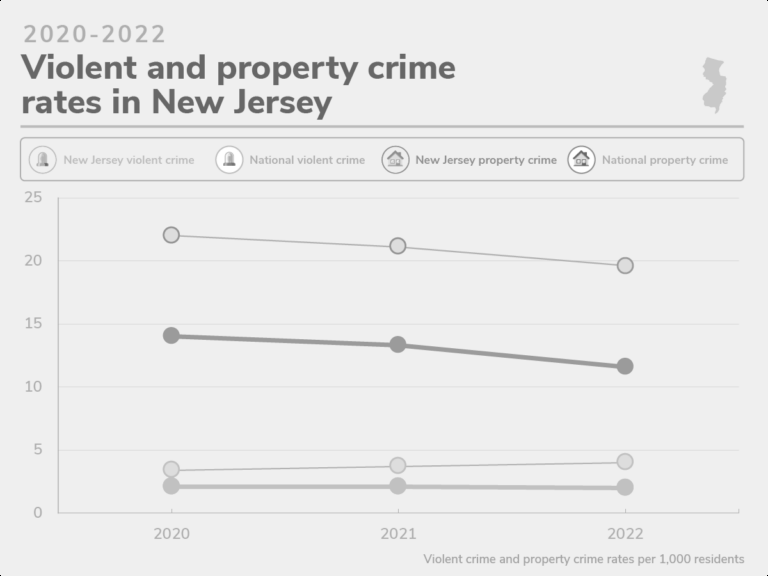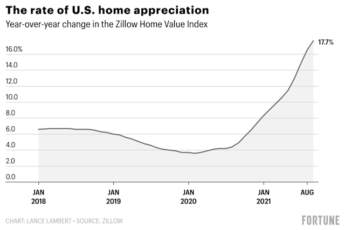If you think New Jersey isn’t bad enough already, you can’t have the drunken meatheads whose crime rate is five times higher than the national average. Asbury Park, Egg Harbor City, and Camden are all small, uncharming towns where you can barely afford to buy the basics. These three towns also have higher violent and property crime rates than the national average.
- Camden residents can barely afford the necessities of life.
- New Jersey’s crime rate is five times higher than the average.
- Egg Harbor City is a small but uncharming town.
- Asbury Park has high violent and property crime rates.
- Asbury Park has a low quality of health care.
- Rochester New
- Yorks
- Lyell-Otis neighborhood in the City of Rochester
- Hemlock Lake
- Canadice Lake
- Seabreeze Amusement Park in Irondequoit
Camden residents can barely afford the necessities of life.
If you’ve ever wondered why Camden, New Jersey, has such a high unemployment rate, look no further than its police department. The Camden police department recently underwent reforms to make the City safer, and one of those changes was to focus on community partnerships and community-oriented policing. Under this new approach, crime rates in Camden decreased by 42% in seven years, and the City’s violent crime rate dropped from 79 per 1,000 residents to 44 per thousand. The county freeholder director credits this success to the new policing philosophy of «community-oriented policing,» which emphasizes partnerships and partnership over punishment.
The community has also become a magnet for nonprofits. For instance, Camden’s Home for Children opened 150 years ago and continues to serve the area’s youth, providing transitional services to help them regain their independence. It continues redefining its role in serving its community and offering assistance to those in need in South Jersey. However, one of the biggest challenges facing the Camden home is the cost of living.
Even though Camden is a small city, the police department has reduced crime by nearly half in the last seven years. In addition to knocking on doors, Camden police officers organize outdoor events to meet and greet locals. Often, these smaller cities have police departments that dissolve after a period of misconduct. And while Camden is not as large as Minneapolis, it still has a thriving police department.
After the recession, the City’s homeless population doubled, and it has only recovered half of the lost jobs. In Camden, there are nearly four thousand food-insecure families. The Camden Board of Education uses this facility for youth programs in the area. The nonprofit organization also accepts donations for targeted capital projects to improve the City’s facilities. And the Camden Home for Children Board provides funds for youth agencies in Southern New Jersey.
New Jersey’s crime rate is five times higher than the average.
Why is New Jersey’s crime rate so high? Several reasons could be to blame for the state’s high crime rate. One disproportionately large portion of the state’s population lives in five cities. These cities account for 62% of all shootings and have ten times the crime rate as the rest of the state. According to a report from the Paterson Press, the state has five times as many shootings as the average.
One of the reasons that New Jersey’s crime rate is so high is that it’s a highly concentrated population. People in New Jersey live on the edge of the City. Newark, Trenton, and Jersey City are some of the most dangerous neighborhoods. New Jersey has the highest crime rate per capita compared to other states. And yet, it’s not just crime that makes the state unsafe.
While the crime rate in these towns is significantly higher than that in other states, it is not as bad as the crime rate in larger cities. Crime in these cities is often a result of poverty and poor housing conditions. The state has the highest unemployment rate in the country, and its crime rate is five times higher than the national average. Despite the higher unemployment rate, residents enjoy a more peaceful lifestyle than they would in larger cities.
While New Jersey’s crime rate is five times the national average, it’s far from the worst in the United States. A study conducted by the University of North Carolina-Chicago shows that larceny-theft rates decreased by 29% between 2010 and 2019. Meanwhile, property crimes decreased by 36% between 2010 and 2019.
Egg Harbor City is a small but uncharming town.
While the name of this town is Germanic, you may think it lacks charm. It has a high unemployment rate of almost 20% and a crime rate that’s 22% higher than the national average. Even though Egg Harbor City is small, its local history is fascinating. This town was founded by German immigrants from Baltimore who brought Old World style to a new American town. A glassworks museum and information on the German oenophile background are worth visiting.
Until recently, the streets of Egg Harbor City were only names on a large map. The town has no blue laws, so its residents were free to worship, dance, and meditate on Sundays. The town’s liberal attitude about Sunday activities contrasted with its neighboring towns, which were more puritan in lifestyle. Until the late-1990s, the City was a thriving port for shipbuilding and harboring.
In the beginning, Egg Harbor was probably populated by small farmers. As time went by, however, the town developed various small industries. After the Civil War, there was a wine industry, cigar factories, brickyards, cut glass factories, and a lumber yard. The town also had a cigar factory and even a brewery. The wine industry has given the City its unique stamp.
The railroad company, whose Board of Directors included men of German descent, decided to build a town in Egg Harbor-based on that heritage. The railroad company’s goal was to establish a «pure German town» and become well-known among the German-American population in the state. But during this time, the country was experiencing tension, prejudice, and anti-immigrant resentment. The town became the target of a nativistic movement called Knownothingism.
Asbury Park has high violent and property crime rates.
Asbury Park, NJ, has higher violent and property crime rates than the rest of New Jersey. The area has high violent crime rates (as many as six times higher than the national average). Property crime is significantly higher than the state average. There are more violent crimes per capita than in most other cities, and the area has an overall crime rate higher than the national average. Fortunately, there are also fewer violent crimes per capita than in other New Jersey cities.
Despite Asbury Park’s high crime rates, the City is not as dangerous as other cities in New Jersey. It has low crime rates, too, but increased property and violent crime rates are a concern. Crime rates vary significantly from neighborhood to neighborhood. As a result, it is essential to know how many crimes are occurring in your area. Taking precautions can help you stay safe. If you live in Asbury Park, be aware of where the crime is.
New Jersey is a relatively safe, but that doesn’t mean it’s completely safe. In fact, there are pockets of crime, especially in urban areas. Camden’s violent crime rate is four times higher than the national average. Trenton and Asbury Park have violent crime rates below the national average, and property crime rates are similar. While Asbury Park may have a relatively low violent crime rate, it’s still a place for thieves.
Although property and violent crimes are still relatively high in Asbury Park, the area’s overall crime rate has decreased. Violent crimes per capita have reduced by more than 60 percent, but property crime has increased by nearly half. It’s important to remember that these figures are based on the entire City, not the borough of Asbury Park. Taking precautions is essential if you live in a neighborhood where violent crime is prevalent.
Asbury Park has a low quality of health care.
Health care in Asbury Park, NJ, is low-quality. In 2010, the City was placed into a Transitional Aid Program, which helped it deal with its significant budget deficit. In 2014, the state and City announced that the City had been released from the program. This partnership has resulted in a substantial upgrade in the City’s bond rating, a reduction in municipal property taxes, and an increase in assessed property value by half a billion dollars.
The median age of the people in Asbury Park, NJ, is 36.8, and the median age of foreign-born residents is 40. This percentage has risen over the years. India was the most common foreign-born birthplace, followed by the Dominican Republic and Mexico. There are no public hospitals in Asbury Park. The City also has a large population of people who are US citizens. Despite the low quality of health care, the town’s citizens are highly-educated, and the school district’s health care services are good.
The City’s air quality ranks low compared to neighboring and parent geographies. Asbury Park’s air quality index is 67, compared to the US average of 58. The BestPlaces air quality index is based on new EPA measures of hazardous air pollutants and a National Air Toxics Assessment model that calculates cancer and respiratory illnesses risk down to the zip code level.
The Visiting Nurse Association of Central Jersey has opened a new LGBTQ health center in Asbury Park. More than 130 community members attended the ribbon-cutting ceremony. The Center will offer various health care services, including HIV/AIDS treatment. A therapist will also be available for the treatment of HIV. The health center is also open to people who are not eligible for care. The Center was founded in 1992 and is now an independent nonprofit.
Did you know there are two Rochester, New York? There are, in fact, two distinct neighborhoods within the City of Rochester. These are the Lyell-Otis neighborhood and Hemlock Lake. The names of these neighborhoods may have little to do with the actual City of Rochester. If you are wondering what they have in common, read on! There is a lot to learn about both Rochester, and New York!
Rochester New
There are some significant differences when comparing the climates of Rochester and its sister city, Buffalo. For starters, Rochester is situated in a humid continental climate zone, which means it has four distinct seasons. Temperatures typically drop below zero degrees Fahrenheit on 4.2 nights each year, and the City receives massive amounts of snow, primarily due to the lake effect. As a result, Rochester is one of the snowiest large cities in the country, and it occasionally breaks record lows for yearly snowfall. During the winter, temperatures are typically well below zero, but the spring and summer months bring abundant rain. Late snowstorms are also not uncommon, depending on the time of year.
At the dawn of the 20th century, Rochester experienced rapid growth. African-Americans populated the City as a part of the Great Migration, and many Hispanics, primarily from Puerto Rico, moved to the City. The City’s changing demographics resulted in intense racial tension and resentment. The 1964 race riot was a culminating moment in racial tension in Rochester. The black community in Rochester played an essential role in the national Civil Rights movement.
Despite the differences in weather, the two Rochesters are not as far apart as many people assume. While Rochester’s winters are brutal, the City is also known for its rich history of innovation. Many Rochester residents have created new inventions, and the City still looks to the future for significant innovations. Cultural events are plentiful and affordable. With so many attractions and activities to choose from, Rochester is the perfect destination for a family trip.
Yorks
In the early 18th century, Rochester was known as the «Young Lion of the West» and then as the «Flour City.» The City increased in the late 1800s and doubled in population in ten years. During this period, the City was also home to Emma Goldman, who championed labor in the area’s sweatshops. There were dozens of religious congregations in Rochester, including four Italian Protestant mission churches.
The two Rochesters share a history. The City of Rochester was formed following the American Revolution. The region’s Native Americans, the Seneca, were forced to cede territory to the British after losing a war against the French and Indians. Four major Iroquois tribes were forced out of New York and given land grants in Canada. Today, Rochester is the largest City in the state of New York.
The Genesee River’s High Falls is considered the City’s historic district. The City has developed this area to allow visitors to see the falls from every angle and learn about Brown’s Race, the massive dam that diverted the water to run parallel to the river. The Falls plunge 96 feet and are situated within a large gorge. The area also has a large concentration of industrial mills, many of which have been refurbished.
Lyell-Otis neighborhood in the City of Rochester
The Lyell-Otis neighborhood in the City of Rochester, New York, has a population of 11,400 residents and a total area of 2.49 square miles. In this neighborhood, the median house value is $70,107, which is less than the national average of $276,286, and 62% of households are renters. The median age of the residents is 28, and 29% are married. Nearly half of all residents have a bachelor’s degree, and only 4% have graduated high school. The overall quality of housing in this neighborhood varies, but overall it is generally affordable and has a low crime rate.
The Lyell-Otis neighborhood in the City of Rochester has a varied character and culture. While it is primarily industrial in nature, the community also has residential areas with sturdy old housing stock, front porches, stained glass, and wood trim. In addition, a neighborhood association has begun developing a section of the historic Erie Canal, which traces its route through the City. The neighborhood’s residents continue to find ways to make their community more vibrant.
One local community has come together to plan for a new crime prevention strategy. This neighborhood, located along Lyell Avenue and Cameron Street, has experienced a recent spike in shootings. Three separate shootings occurred within hours last Friday, while a fourth was fatal on the same street the following week. Although the police presence in this neighborhood is often lacking, neighborhood groups are looking for ways to curb crime and build stronger community bonds.
Hemlock Lake
Hemlock Lake is one of the largest lakes in the Finger Lakes. It is 6.7 miles long and reaches a depth of 90 feet (30 meters). The lake is a pristine body of water that is a popular destination for boaters, kayakers, and anglers. Hemlock Lake is the only Finger Lake in the United States not named by Native Americans. Today, visitors can paddle or kayak on the lake.
Originally, Hemlock Lake was intended as a retreat from the world. However, it was not long before people sought to make their cottages and hotels there. This led to a growing number of places. The lake’s shores were home to more than 200 cottages. The village of Hemlock Lake briefly changed its name to Holden, but eventually reverted to Hemlock Lake.
Hemlock Lake is protected as the water reservoir for the City of Rochester. As a result, no cottages have been built on its shores. Some activities are prohibited, including hunting and fishing. It is important to note that the surrounding forest is classified as «old growth,» meaning that early settlers did not cut it down. This protected ecosystem is home to four15 acres of new trees. Hemlock Finger Lake is one of the state’s most significant «old growth» tracts.
To get to Hemlock Lake, you must leave Rochester and travel to the surrounding area. Take Route 15A south and take a right onto Rix Hill Road. This is about one mile from the intersection of Route 20A and 15A. Then take East Lake Road, which is 1.1 miles from the meeting. You will notice the lake on your right as soon as you turn. It is a beautiful spot to enjoy a picnic.
Canadice Lake
The geology of Rochester is based on the retreat and readvance of Pleistocene ice sheets. They advanced and receded at roughly the same rate. During the retreat, the ice sheets deposited sediment along the southern edge of the ice mass. These sediments formed a line of hills that is still visible today, including Mt. Hope, Highland Park, Pinnacle Hill, and Cobb’s Hill. The City also contains an unstratified part of the Kame delta that is called a kame moraine.
In 1789, Ebenezer Allen built a grist mill at the falls of the Genesee River and was granted a 100-acre tract on the condition that he serve the Indians. Several years later, he sold the land to Colonel William Fitzhugh and Major Charles Carroll. In 1811, Colonel Nathaniel Rochester began offering lots for sale in the area. In 1817, the village was incorporated as Rochesterville and shortened to Rochester in 1822. Its port eventually developed and became a hub of Great Lakes shipping and processing.
Although the City’s population has declined over the past few years, it still retains eligibility for federal Community Development Block Grants (CDBG) programs that fund public facilities, economic development initiatives, and other projects. However, a recent request to the Census Bureau for a list of innumerable households in Rochester was denied. This is a problem for the City’s economy, and it is a shame that Rochester is split into two.
Seabreeze Amusement Park in Irondequoit
The historic amusement park in Irondequoit, New York, is celebrating its 130th birthday this year! The park, which began as a picnic grove in 1879, is the fourth oldest amusement park in the United States, and features four roller coasters. The park’s Jack Rabbit is North America’s oldest continuously operating roller coaster. The park’s employees have an average tenure of 3.7 years, making it a great workplace.
Originally named Dreamland, the Seabreeze Amusement Park has evolved with the times. Its rides and attractions have changed over the years, and in the 1950s, the park expanded to include kiddie rides. Three of the rides are still in operation, but the park is a far cry from the days of the ’60s when the nation was in the middle of a civil rights movement.
In 1894, George Long helped run a carousel at Genesee Valley Park. He returned to the park to install a carousel at Seabreeze in 1904. After the closing of Ontario Beach Amusement Park in 1919, the park quickly became a mainstay for Rochesterians looking for fun. Today, six generations of the Long family continue to provide fun and amusement to visitors of all ages.







